Imagine walking into a room filled with warm, inviting light. It’s a whole new world. Expert lighting design can change any space, making it more beautiful, useful, and welcoming. As someone who loves their home and business, I know how lighting can truly transform a place.
In this guide, we’ll explore the world of expert lighting design. We’ll cover the basics, the newest trends, and creative ways to light up your space. Whether you want a cozy living room, a stunning commercial space, or a safer, more attractive outdoor area, you’ll learn how to make it happen.
Key Takeaways
- Discover the transformative power of expertly designed lighting in enhancing the ambiance, functionality, and aesthetic appeal of your spaces.
- Explore the fundamental principles and the science behind lighting design to make informed decisions.
- Learn about the latest trends in architectural and smart lighting solutions and how to incorporate them into your spaces.
- Understand the importance of energy-efficient and sustainable lighting choices for creating eco-friendly environments.
- Gain insights into the art of lighting design, from facade illumination to interior architectural techniques.
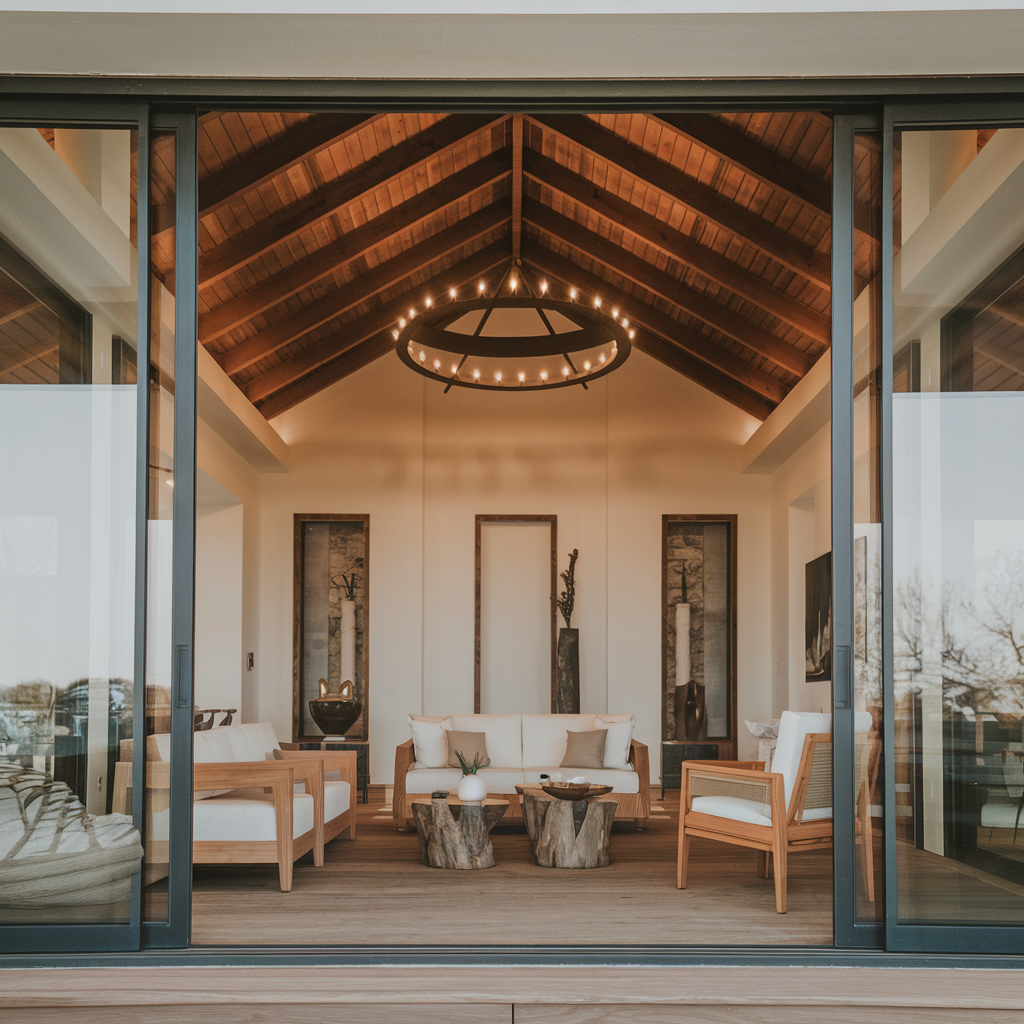
Understanding the Fundamentals of Lighting Design
Lighting design is key in changing any space, whether it’s a home or a business. It involves knowing the basics of light, how it spreads, and the effect of color temperature. This knowledge helps designers make lighting that makes a space look good and work well.
Basic Principles of Illumination
The main ideas of light include how bright it is, where it comes from, and how it spreads. These ideas affect how we see and use a space. Knowing these basics is the first step to good lighting design.
The Science Behind Light Distribution
Understanding how light moves and changes is important. Things like reflection, refraction, and absorption affect how light spreads in a space. This, in turn, changes how we see and feel the space.
Color Temperature and Its Impact
Color temperature, shown in Kelvin (K), is very important in lighting design. It greatly affects the mood and feel of a space. Warmer colors (2700K-3000K) make a space feel cozy. Cooler colors (4000K-6500K) make it feel more energizing.
| Color Temperature Range | Lighting Effect |
|---|---|
| 2700K – 3000K | Warm, inviting, and cozy |
| 4000K – 6500K | Cool, energizing, and productive |
Knowing these basic ideas helps professionals make lighting that improves any space. It makes the space better to be in and more functional.
Creating the Perfect Ambiance Through Strategic Illumination
Making the perfect ambiance in a space is like art. It needs a deep understanding of lighting and how to use it. Designers can make people feel certain ways, show off the space’s design, and make the room feel just right.
It’s important to mix natural and artificial light to make a space feel welcoming. Pendant lights or chandeliers can add to the natural light’s warmth. Recessed and track lighting can highlight special parts of the room or make certain areas stand out.
Playing with light colors is also key. Warm bulbs can make a room feel cozy and inviting. Cool, LED lights can give a modern and lively vibe.
“Lighting has the power to transform a room, and it’s the job of the designer to harness that power to create a truly captivating space.”
Lighting designers use science and psychology to make spaces look great and feel right. They make sure the light makes the room look good and feels good to be in.
- Leverage natural light through strategically placed windows and skylights
- Incorporate a mix of ambient, task, and accent lighting to create depth and dimension
- Experiment with color temperature to set the mood and tone of a space
- Highlight architectural features and focal points with targeted lighting solutions
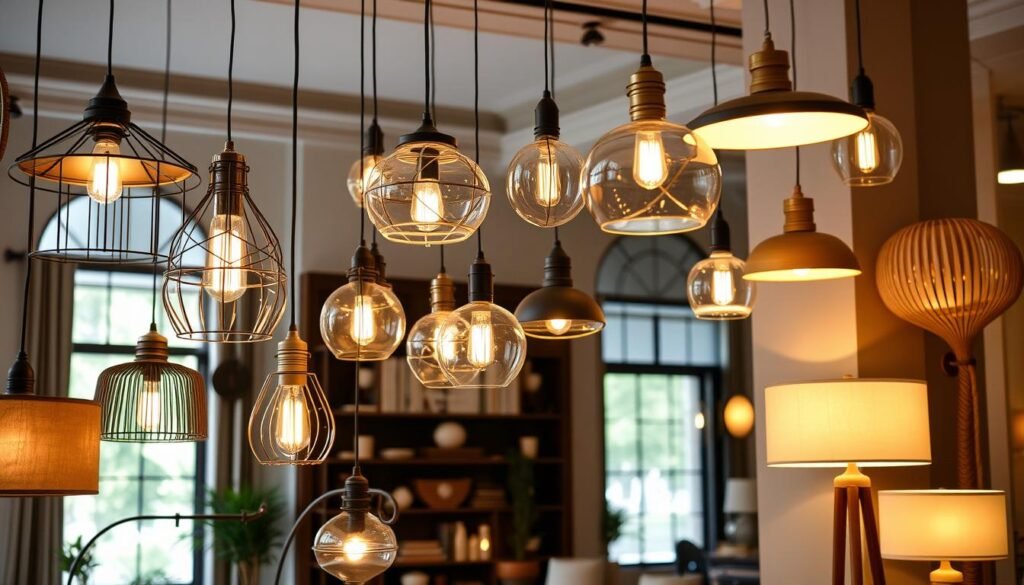
To make the perfect ambiance, designers must think about everything. They need to consider natural and artificial light, color, and the space’s unique features. With these skills, designers can turn any place into a special and engaging spot.
Modern Lighting Fixtures and Their Applications
Lighting is key in changing the feel and use of any area. As design trends change, modern lighting has become crucial. It boosts both the look and energy use of today’s homes and offices.
Pendant and Chandeliers
Pendant lights and chandeliers are great for adding style and function. They come in many styles, from simple to fancy. These lights can highlight certain spots, light up areas, or even be seen as art.
Recessed and Track Lighting
Recessed and track lighting are subtle and flexible. They fit well in modern, open spaces. These lighting fixtures are perfect for task lighting and adding a clean look.
Smart Lighting Solutions
Smart lighting is getting more popular with energy-efficient lighting and smart homes. These systems let you control lights with voice commands or apps. They make life easier, save energy, and are good for the planet.
| Lighting Fixture | Ideal Application | Key Benefits |
|---|---|---|
| Pendant Lights | Dining rooms, entryways, and over kitchen islands | Create focal points, provide task lighting, and add visual interest |
| Chandeliers | Formal living rooms, grand foyers, and dining rooms | Offer a statement piece, add a sense of elegance, and provide ambient lighting |
| Recessed Lighting | Kitchens, bathrooms, hallways, and open-concept spaces | Provide a clean, integrated look, offer task lighting, and create a seamless aesthetic |
| Track Lighting | Art galleries, display shelves, and task-oriented areas | Flexible and adjustable, highlight specific features or areas, and offer a contemporary look |
| Smart Lighting | Any room or space in both residential and commercial settings | Enhance energy efficiency, provide personalized lighting control, and integrate with smart home technology |
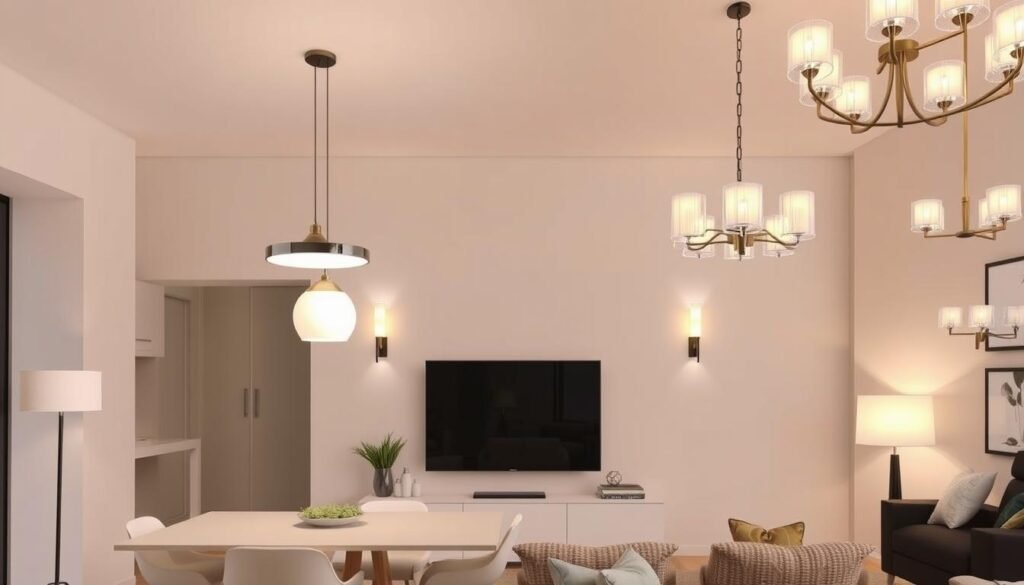
Knowing about different lighting fixtures helps designers and homeowners. They can make spaces that look great and work well. Adding energy-efficient lighting and smart tech makes lighting design even more exciting today.
Energy-Efficient Solutions for Sustainable Spaces
In today’s world, we all care more about the environment. The lighting industry has stepped up, offering energy-efficient lighting solutions. These solutions mix beauty with sustainability. They include LED technologies and lighting control systems, changing how we light our homes and offices.
LED lighting is a big reason for this change. LEDs use much less energy than old bulbs and last a long time. This means we don’t need to replace them as often, which helps the planet.
Lighting control systems also play a big role. These smart systems let us control our lights better. We can use less energy with features like automated dimmers and motion sensors.
Good lighting design is not just about tech. It’s also about how we plan and choose our lighting. By picking the right energy-efficient lighting, we can make spaces that are both bright and beautiful.
Using these energy-efficient solutions helps the environment and saves money. As we all want to live more sustainably, the lighting industry is leading the way. It helps us make spaces that are good for us and the planet.
“Lighting is the foundation of any well-designed space, and by choosing energy-efficient solutions, we can create beautiful, sustainable environments that benefit both people and the planet.”
The Art of Architectural Lighting
Architectural lighting design is more than just lighting up a space. It’s a way to change how we see and feel about a place. It can make a room look better, highlight important parts of a building, and create a special atmosphere. We’ll look at how lighting designers use their skills to make spaces look and work better.
Facade Illumination Techniques
The first thing we notice about a building is its facade. Architectural lighting can make this first impression even stronger. Designers use different illumination techniques to make the building’s details stand out. They can make shadows and make the building look amazing at night.
Interior Architectural Lighting
Inside a building, architectural lighting is key to showing off the design. It can highlight things like high ceilings or special details. By using different lights, designers can add depth and interest to the space.
Light Layering Methods
- Ambient lighting: Provides overall illumination and sets the tone of a space.
- Task lighting: Focuses on specific areas to facilitate practical tasks and activities.
- Accent lighting: Highlights architectural features, artwork, or other design elements.
The art of architectural lighting is about mixing these light layers. This creates a space that looks great and works well. By using light layering, designers can make spaces that are both beautiful and practical.
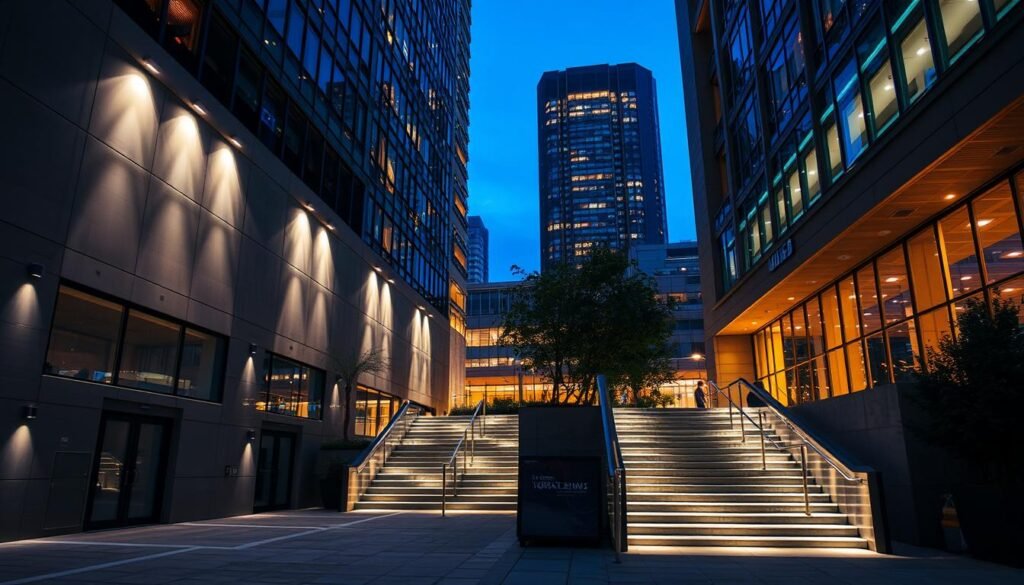
Innovative Lighting Control Systems
Lighting control systems are changing the game in energy efficiency and adaptability. They offer unmatched flexibility, letting you control your lighting with precision. This enhances your space’s overall feel.
Modern lighting control systems come with features like automated dimming and color-changing. They let you control your space’s light perfectly. Plus, they integrate smoothly with smart homes, making your space more efficient and harmonious.
- Discover the power of automated dimming to set the perfect mood and ambiance.
- Explore color-changing technologies that enable you to transform the atmosphere with the touch of a button.
- Learn how lighting control systems can sync with your smart home devices for a truly integrated experience.
Adopting these lighting control systems cuts down energy use and tailors your space to your liking. Improve your living or workspace with the right light and control.
“Lighting control systems are the future of energy-efficient and personalized spaces. They empower us to create environments that are both visually appealing and environmentally responsible.”
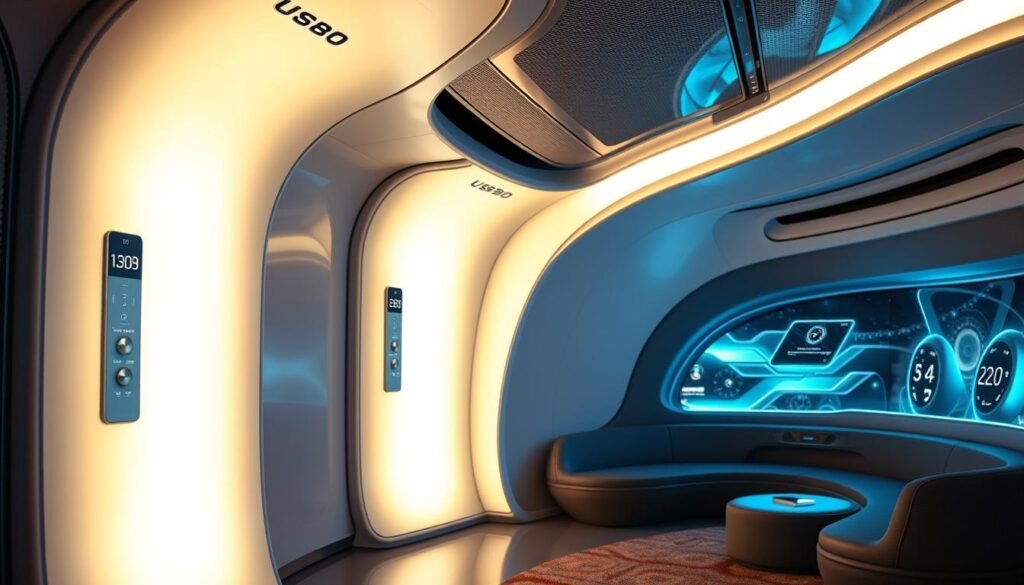
Outdoor Lighting Design: Enhancing Exterior Spaces
Outdoor lighting can change how your outdoor areas look and feel. It can light up your garden or add security features. Good outdoor lighting design makes your outdoor spaces look better and work better.
Landscape Lighting Techniques
Using illumination techniques can make your landscape look amazing. Path lights help people find their way, while spotlights highlight special features. Lights that shine up or down can make your garden feel welcoming.
Security Through Illumination
Lighting outside is key for safety and keeping intruders away. Lights that turn on when someone moves, pathway lights, and spotlights can light up dark spots. These outdoor lighting design tricks make your outdoor space safer and more welcoming.
Creating Outdoor Living Areas
The right illumination techniques can turn your outdoor areas into cozy living spots. Soft lights like string lights or lanterns make a warm feel. Different lights can create different areas for fun all year.
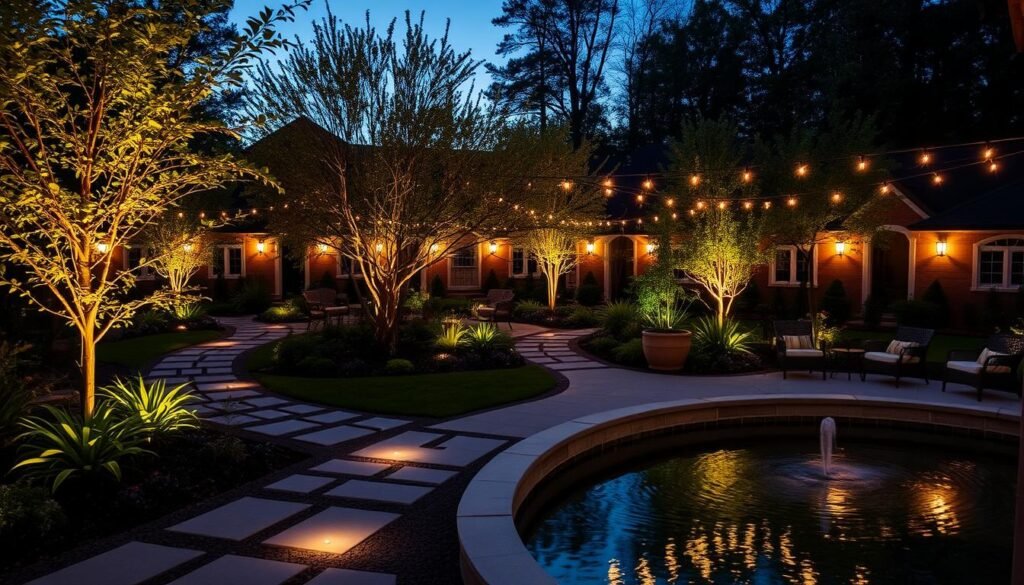
| Lighting Technique | Purpose | Example Application |
|---|---|---|
| Path Lighting | Guide visitors through the landscape | Illuminating walkways and steps |
| Accent Lighting | Highlight architectural features or focal points | Spotlighting a sculpture or water feature |
| Motion-Activated Lighting | Enhance security and deter intruders | Floodlights that turn on when motion is detected |
| Ambient Lighting | Create a cozy, inviting atmosphere | String lights or lanterns in an outdoor living area |
Using different outdoor lighting design tricks can make your outdoor spaces better. From lighting up your garden to making it safer and more inviting, the right lights can change your outdoor areas a lot.
Professional Lighting Design for Commercial Spaces
Creating the perfect lighting for commercial areas is a mix of looks, function, and saving energy. As lighting design experts, we know the special challenges for retail, offices, hotels, and public buildings. They all need the right light.
Looking to improve customer experience, boost work output, or show off your brand? The right lighting design can change everything. Our team is skilled in architectural lighting that fits perfectly with your space’s design.
Illuminating the Retail Experience
In retail, lighting design is key to a welcoming and engaging space. We create lighting that highlights your products, guides shoppers, and leaves a memorable impression.
Boosting Productivity in Office Spaces
Good lighting design can really help office workers be more productive and happy. We know how to use light to improve focus, teamwork, and overall job satisfaction.
Enhancing Hospitality Ambiance
For hotels and restaurants, the right lighting design can make a big difference. We design architectural lighting that matches your space’s look, making it inviting and visually stunning.
| Commercial Space | Lighting Design Considerations | Key Objectives |
|---|---|---|
| Retail | Product showcasing, wayfinding, ambiance | Enhance customer experience, increase sales |
| Offices | Task lighting, workplace well-being, energy efficiency | Boost productivity, create a comfortable environment |
| Hospitality | Ambiance, architectural integration, guest experience | Elevate the guest experience, reinforce brand identity |
We’re all about creating lighting design solutions that meet your space’s needs and look great. Contact us to see how we can make your space stand out and impress everyone who visits.
Residential Lighting: From Concept to Implementation
Residential lighting design is a journey from start to finish. It changes how a home feels and works. Homeowners can make their homes look and feel better by choosing the right lighting.
Room-by-Room Lighting Guidelines
Lighting design varies for each room. Kitchens need task lighting, while living rooms need ambient light. Dining areas benefit from accent lighting. This ensures each room is lit just right.
Creating Focal Points with Light
Lighting can highlight the best parts of a room. It can focus on architectural features, artwork, or cozy spots. Using task, accent, and layered lighting makes these areas stand out.
Mood Lighting Solutions
Mood lighting sets the mood of a home. A fireplace can make a room feel warm and inviting. Bedrooms benefit from soft, ambient light. The right lighting fixtures can change a room’s feel.
“Lighting has the power to completely transform the mood and functionality of a living space. With the right design approach, homeowners can create an environment that is not only visually stunning but also tailored to their unique lifestyle and preferences.”
By following residential lighting design, homeowners can make their homes better. They create spaces that are both beautiful and functional, fitting their style and needs.
Technology and Tools in Modern Lighting Design
Technology has changed how lighting designers work. New lighting visualization software and lighting control systems help designers make better, more efficient lights. These tools let designers create dynamic lighting solutions.
Virtual reality (VR) and augmented reality (AR) are big in lighting design now. They let designers see their ideas come to life in a virtual space. This makes it easier to fine-tune designs quickly.
Intelligent lighting control systems have also made a big impact. They control light levels, colors, and energy use. This means designers can make lights that save energy and fit each space perfectly.
As tech keeps getting better, designers can be more creative. They make lights that look great and work well. Plus, these lights help make spaces better for people and the planet.
| Technology | Application | Benefits |
|---|---|---|
| Lighting Visualization Software | Allows designers to simulate and visualize lighting concepts in a virtual environment | Enhances design accuracy, streamlines the design process, and enables iterative refinement |
| Lighting Control Systems | Provides advanced control over lighting levels, color temperature, and energy consumption | Enables customizable and energy-efficient lighting solutions, adapting to the needs of each space |
| Virtual Reality (VR) and Augmented Reality (AR) | Allows designers to experience their lighting concepts in an immersive digital environment | Enhances the design process by enabling interactive visualization and expediting design iterations |
“The integration of technology in lighting design has empowered us to create lighting solutions that are not only visually stunning but also highly functional and sustainable.”
Conclusion
Expert lighting design is incredibly powerful. It changes how we see and feel a space. By using the right lighting, experts can make any area look better and work better too.
Lighting design can make a big difference in your home or business. It can change the mood and make the space more efficient. This makes your space more inviting and comfortable.
When starting a lighting design project, team up with top experts. They can help you make your vision come to life. Together, you can create spaces that are not just beautiful but also inspiring and healthy.
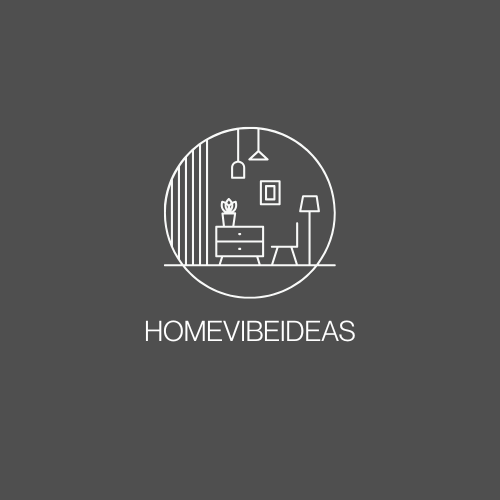
Hello, I’m Jane, founder of Home Vibe Ideas. I’m here to inspire stylish Home Design, modern Smart Living, beautiful Outdoor Spaces, and creative DIY Projects to help you create a home that’s uniquely yours.
Disclosure: This post contains affiliate links. If you click on a link and make a purchase, we may earn a small commission at no additional cost to you. The content on this site was created with the help of AI technology.


